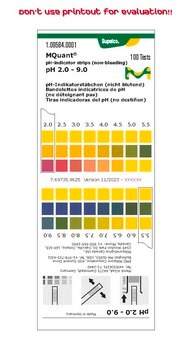All Photos(2)
About This Item
Linear Formula:
CH3COO(CH2)4CH3
CAS Number:
Molecular Weight:
130.18
Beilstein/REAXYS Number:
1744753
EC Number:
MDL number:
UNSPSC Code:
12352100
PubChem Substance ID:
NACRES:
NA.21
Recommended Products
vapor density
4.5 (vs air)
Quality Level
vapor pressure
4 mmHg ( 20 °C)
assay
99%
autoignition temp.
680 °F
refractive index
n20/D 1.402 (lit.)
bp
142-149 °C (lit.)
mp
−100 °C (lit.)
density
0.876 g/mL at 25 °C (lit.)
SMILES string
CCCCCOC(C)=O
InChI
1S/C7H14O2/c1-3-4-5-6-9-7(2)8/h3-6H2,1-2H3
InChI key
PGMYKACGEOXYJE-UHFFFAOYSA-N
Looking for similar products? Visit Product Comparison Guide
Related Categories
General description
Pentyl acetate is a straight chain ester. It is an odorant and its odor threshold has been evaluated by sensory panel methods. High pressure phase behavior of type I has been reported for its binary mixtures with CO2. Solubility of these solvent mixtures was observed to increase with the rise in temperature at constant pressure.
application
Pentyl acetate may be used as odorant to compose the library of odorants to evaluate the responses of olfactory sensory neurons (OSNs) to various odorants (having different structures and odors).
Banana essence. Used as test odorant in studies of olfactory function and in studies of the psychosocial effects of odor.
signalword
Warning
hcodes
Hazard Classifications
Flam. Liq. 3
supp_hazards
Storage Class
3 - Flammable liquids
wgk_germany
WGK 1
flash_point_f
105.8 °F
flash_point_c
41 °C
ppe
Eyeshields, Faceshields, Gloves, type ABEK (EN14387) respirator filter
Choose from one of the most recent versions:
Already Own This Product?
Find documentation for the products that you have recently purchased in the Document Library.
Customers Also Viewed
Kiyomitsu Nara et al.
The Journal of neuroscience : the official journal of the Society for Neuroscience, 31(25), 9179-9191 (2011-06-24)
Mammals can perceive and discriminate myriad volatile chemicals as having a distinct odor. Odorants are initially detected by odorant receptors (ORs) on olfactory sensory neurons (OSNs) in the nose. In the mouse, each OSN expresses one of ∼1000 different OR
Michael Schleyer et al.
Learning & memory (Cold Spring Harbor, N.Y.), 18(10), 639-653 (2011-09-29)
Drosophila larvae combine a numerically simple brain, a correspondingly moderate behavioral complexity, and the availability of a rich toolbox for transgenic manipulation. This makes them attractive as a study case when trying to achieve a circuit-level understanding of behavior organization.
Sergei A Korneev et al.
The Journal of neuroscience : the official journal of the Society for Neuroscience, 25(5), 1188-1192 (2005-02-04)
In a number of neuronal models of learning, signaling by the neurotransmitter nitric oxide (NO), synthesized by the enzyme neuronal NO synthase (nNOS), is essential for the formation of long-term memory (LTM). Using the molluscan model system Lymnaea, we investigate
Janice K Kiecolt-Glaser et al.
Psychoneuroendocrinology, 33(3), 328-339 (2008-01-08)
Despite aromatherapy's popularity, efficacy data are scant, and potential mechanisms are controversial. This randomized controlled trial examined the psychological, autonomic, endocrine, and immune consequences of one purported relaxant odor (lavender), one stimulant odor (lemon), and a no-odor control (water), before
Jonas K Olofsson et al.
Chemical senses, 31(7), 699-704 (2006-07-20)
In experimental practice, odors are commonly applied to only one nostril for recordings of olfactory event-related potentials (OERPs), but the lateralization aspect of the OERP response is unclear regarding both stimulated nostril and cortical topography. The purpose of the present
Our team of scientists has experience in all areas of research including Life Science, Material Science, Chemical Synthesis, Chromatography, Analytical and many others.
Contact Technical Service











